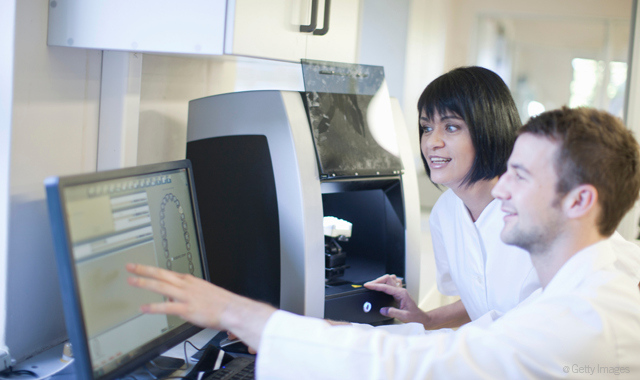3D CAD/CAM in the future of dentistry
The progress of dentistry has been likened to a moving sidewalk where, if you are not moving forward, progress sweeps you backward. Time and again we have seen that you can make the best buggy whips in the world, but if no one is making buggies anymore, your company is doomed to failure.

The progress of dentistry has been likened to a moving sidewalk where, if you are not moving forward, progress sweeps you backward. Time and again we have seen that you can make the best buggy whips in the world, but if no one is making buggies anymore, your company is doomed to failure.
A few years ago, one of the largest impression material companies in the U.S. spent nearly $100 million in an effort to enter the digital impression market. Now if that company spent $100 million to enter that market, it should give you a pretty clear indication where the big players in our industry are seeing the future.
More from Dr. Flucke: CAD/CAM: Having it all ... your way
In the last two weeks, I have seen a couple of amazing products that go hand in hand-or hand in glove-with that process. Now that we are seeing the amazing market penetration of digital impression systems, we are beginning to see a similar market growth and market penetration in digital CAD/CAM systems. By that I mean digital impression systems that interface with digital systems, which allow us to create the final restoration chairside.
These systems will continue to evolve into the market and are due to explode in the next year or so as the technologies become ready for prime time. Look for two technologies that are going to create some serious industry buzz in the not-too-distant future.
More from Dr. Flucke: The top advances in caries detection
One is what I will term “Subtractive Puck Technology.” What I mean by that is taking multi-axis mills and grinding out restorations using burs. This will be done by cutting the restoration out of an existing piece of restorative material (hence “subtractive”). However, we are somewhat used to subtractive milling in the world of blocks. The difference here is that each block can only be used for one restoration. “Subtractive Puck Technology” uses a disc about the size of a hockey puck that can be used to mill multiple restorations. Whether the restorations are all for the same patient or different patients makes little or no difference because the mill never touches the patients and cross contamination is of no consequence.
Continue to page two for more...
The preparation is scanned by the acquisition device and then sent to the “Puck Mill” (the systems I have seen most recently are the 3Shape TRIOS scanner paired with the BioDenta “Puck” mill). The milling system has design and milling software that allows simple and easy creation of any indirect porcelain prosthesis.
Trending article: 5 technologies your practice needs to invest in now
The other is what I will term “Additive Laser Technology.” This is a technology that involves 3D printing utilizing an incredibly precise laser system and a photo-polymerizing “soup” or liquid. The company I saw at the ADA Meeting in Washington D.C. was envisiontec. The 3D printing is accomplished by utilizing a laser beam that is fired into the “soup” which causes precise photo-polymerization. Basically whatever is being created rises out of the “soup” as more and more layers are polymerized.
The process is very similar to an inkjet printer where a small amount of ink is very accurately sprayed onto a sheet of paper. In this case, a very small laser is accurately fired into the “soup” causing polymerization, which, in turn, causes the hardened material to rise out of the “soup” in polymerized layers. However, the layers are undetectable and the printed piece appears as on entire polymerized piece of plastic or whatever material is being printed.
In Europe I have read of titanium being printed, which has lead to custom 3D-printed prosthetic hips being created during the surgery. I can envision a time in the not-too-distant future where both dental implants, as well as prostheses, are custom created in a CAD/CAM environment.
More from Dr. Flucke: How to ensure the entire team is on board with technology
Make sure to keep your eyes and ears open during 2015 as more and more of this incredible technology makes the news. In my office, we are preparing to do beta testing on some of these new technologies in the first half of 2016.
As you all know, breaking stuff is one of the things I do best so keep checking in on your “Technology Evangelist” and I’ll let you know the good, the bad and the ugly of these new devices and concepts as the new year progresses!